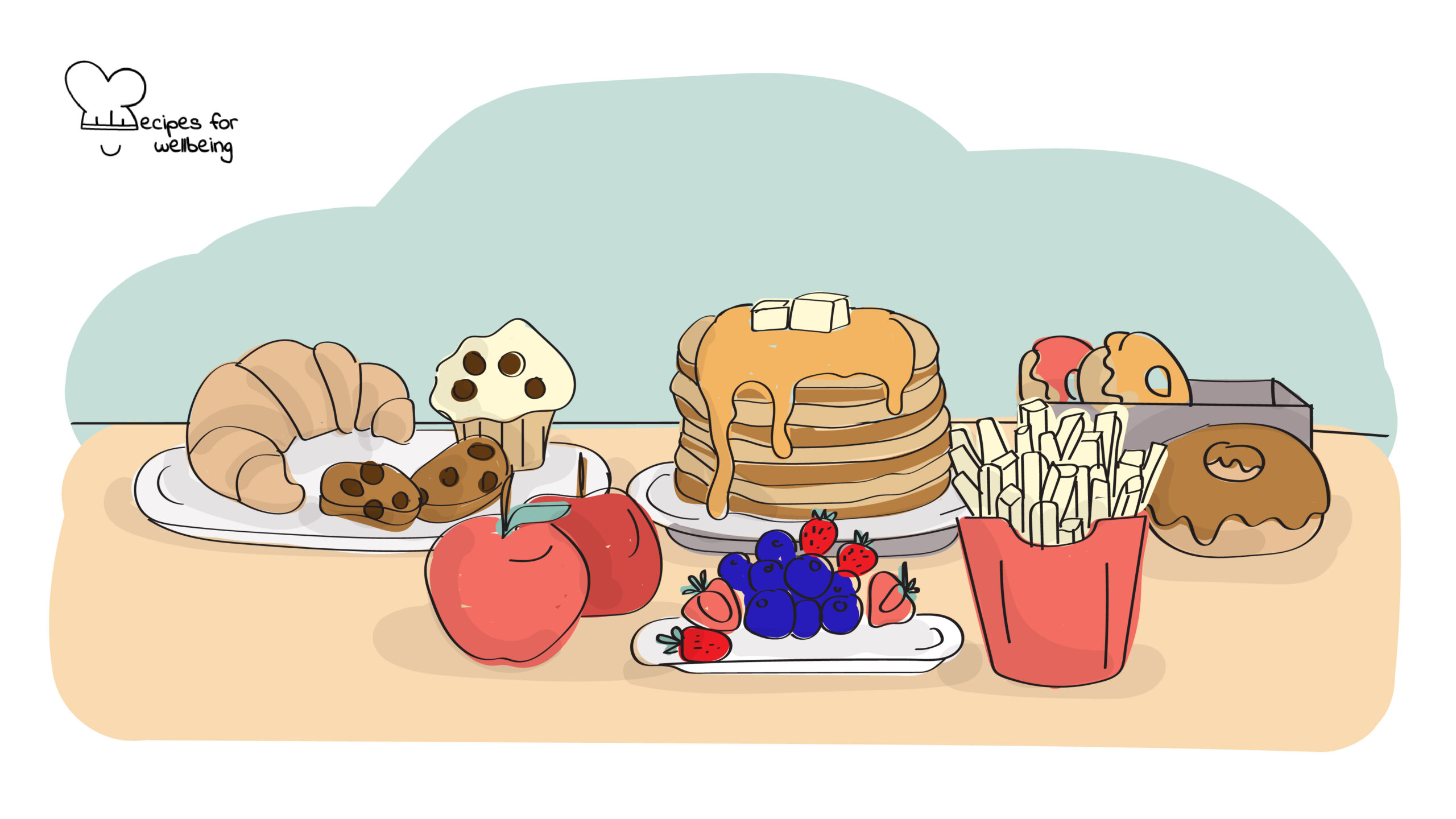
Mindful eating
Tell me what you eat, and I will tell you who you are. ―Brillat-Savarin
👥 Serves: 1 person, 11-25 people, 2-10 people
🎚 Difficulty: Easy
⏳ Total time: 1-10 minutes
🥣 Ingredients: Small snacks (2 per person – these could include pretzels, small pieces of cereal, chocolate or raisins), “Introducing Positive Psychology: A Practical Guide” book by Bridget Grenville-Cleave (if you’re curious to find out more about it!)
🤓 Wholebeing Domains: Awareness, Positive Emotion
💪 Wholebeing Skills: Abundance, Contemplation, Focus, Gratitude, Mindfulness, Pleasure, Presence

Mindful eating
📝 Description
An effective practice to be present whilst enjoying food.
Mindful eating is a form of mindfulness practice that has numerous benefits for your mind and body, including (1) reducing overeating and binge eating, (2) losing weight, (3) coping with chronic eating problems… And it will help you truly savour your food!
The following guidelines have been taken from the “Mindful Eating” exercise provided by Bridget Grenville-Cleave in their book, Introducing Positive Psychology: A Practical Guide.
Take five minutes out of your normal schedule. Find a couple of small snacks or other edible treats, such as pretzels, small pieces of cereal, chocolate or raisins. You also need a quiet place to sit. First of all, eat one of your chosen snacks in your normal fashion. Then pick up a second one and go through the following steps. Take your time, don’t rush.
👣 Steps
Step 1 – Observe
Start by looking carefully at it. Imagine that you have never seen a pretzel or a raisin before. Notice its colour and texture, turn it over carefully and slowly in your hand. Notice how its colour changes as the light catches it. Notice the fine grains of salt on the pretzels, or the crinkles on the surface of the raisin. Sniff it. What odour can you detect? Imagine eating the pretzel or raisin, imagine putting it in your mouth. Notice how your mouth starts to water at the mere thought of eating it. If at any point you start thinking ‘Why am I doing this?’ or ‘This is a waste of time’, acknowledge these as thoughts. Then return your attention to the object.
Step 2 – Taste
Having observed the snack closely from every angle, put it in your mouth but don’t eat it just yet. What is the first sensation you notice? Is it taste or touch? How does the snack feel as you roll it around your mouth?
Step 3 – (Really) taste
Now start to bite into or chew the snack. How does it feel when you bite into it for the first time? Do you get a satisfying crunch, or a soft chewy sensation? Notice the taste – is it a single flavour or a combination? Is it salty, sweet or both? Take your time, imagining that you must make it last forever.
Step 4 – Swallow
Finally, swallow, noticing any aftertaste or other sensations in your mouth.
Step 5 – Reflect
Having eaten the snack, how do you feel? How did it feel to eat the snack mindfully?
Step 6 – Compare
Now compare this with your experience of eating the first snack. Often, the first time people eat mindfully, they cannot believe how different it is to their normal experience of eating and how much enjoyment can be squeezed out of one tiny piece of food. You can do the same thing with drinking – a small glass of your favourite beer, wine or fruit juice will be just as effective for starting your mindfulness practice.

